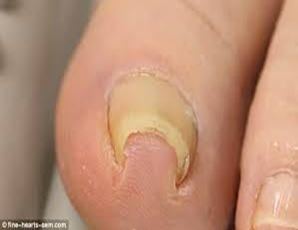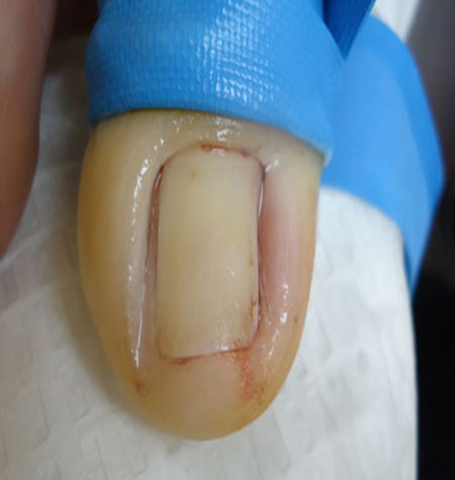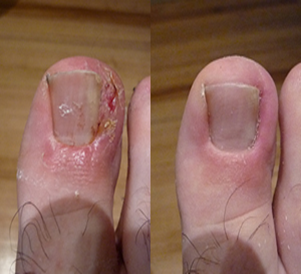INGROWN TOENAILS: CAUSES AND TREATMENT
Ingrown toenails are painful, often recurring, problems that commonly present to podiatry clinics. More often than not it affects one or both sides of the big toe nail where the nail edge traumatises the surrounding skin.

Signs and Symptoms:
– Redness, swelling and/or inflammation around the nail
– Pain around the nail edge (sulcus)
– Visible nail spike or curved nail edge
– Yellow discharge/exudate when infection is present

Causes:
– Ill-fitting footwear: Tight fitting shoes that don’t have enough width will encourage the toes to rub together or be traumatised by the shoe itself increasing the risk of skin damage
– Incorrect cutting technique: Cutting the nails too short or deep into the sulcus (the skin surrounding the nail) increases the risk of an ingrown nail
– Sporting or work conditions: Any sports, but particularly any sports involving repetitive running and/or kicking, will increase the risk of trauma to the nail and surrounding skin. In the same way, any jobs that require long periods of standing in high heels or safety boots will also increase your risk.
– Underlying health conditions: Psoriaris and fungal nail infections are two common reasons the nails can change shape/thickness causing irritation of the skin. Many other conditions, like lymphoedema, or treatments, such as chemotherapy for cancer, can cause the feet to swell or alter the nail matrix which increases the risk of rubbing between toes.
Your podiatrist will be able to assess your unique situation and advise on the likely reason for your ingrown toenails.

Treatment:
Often the problem can be treated conservatively by a podiatrist where the offending nail spike is removed and any skin damage treated through a dressing regime. This is often painless, particularly if attended to early, with resolution occurring within a few simple treatments. Then with correct care and maintenance, as well as the addressment of any underlying causes, no further treatment may be required.
Unfortunately in some cases ingrown nails can be a recurring problem and can pose a more serious health issue or simply cause ongoing discomfort. People who suffer from diabetes, poor circulation, increased swelling, or poor sensation are particularly at risk of a minor issue turning nasty. Therefore, in these cases a permanent solution is available in the way of a minor surgical procedure, known as a Partial Nail Avulsion. This procedure is performed in our rooms under local anaesthetic, takes less than an hour, and offers permanent relief from the offending nail.

The ingrown section of nail, and its nail bed, are removed and Phenol is applied to the area to ensure no regrowth of this section. One or two follow up appointments are needed for re-dressing and to assess the health of the area, with antibiotics being advised to help prevent infection in some instances. The procedure requires no skin incision or stitching, greatly reducing recovery time, with the end result after a few weeks, in most cases, being a toe free of pain and a return to normal cosmetic appearance.

If you or somebody you know suffer from ingrown nails please feel free to call the clinic on 94805522 and enquire about the most suitable treatment option.
by Chris Petropoulos
2